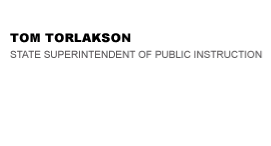New Financial Reporting Requirements for Pensions


Official Letter
Official Letter
Sent by electronic mail
Dear County and District Chief Business Officials and Charter School Administrators:
NEW FINANCIAL REPORTING REQUIREMENTS FOR PENSIONS
The two recent pension accounting standards issued by the Governmental Accounting Standards Board (GASB) make fundamental changes to how state and local governments account for their costs and obligations relating to employee pensions. This letter augments the considerable body of information about the new standards that is available from other sources, and discusses certain implications for California local educational agencies (LEAs).
The guidance in this letter supersedes the guidance in the 1996 Management Advisory 96-03 from the California Department of Education (CDE) relating to accounting for on- behalf pension payments made by the state.
SYNOPSIS OF NEW REQUIREMENTS
GASB Statement 68 (GASB 68), Accounting and Financial Reporting for Pensions—an amendment of GASB Statement No. 27, introduces new requirements for accrual-basis recognition by state and local governments of employer costs and obligations for pensions. Although GASB 68 relates to accrual-basis financial statements, for California LEAs there are implications for governmental fund statements as well.
GASB Statement 71 (GASB 71), Pension Transition for Contributions Made Subsequent to the Measurement Date—an amendment of GASB Statement No. 68, amends the transition provisions of GASB 68 to eliminate a potential misstatement in the year of implementation.
Under previous accounting standards, employers participating in a cost-sharing defined benefit pension plan—such as the CalSTRS and CalPERS plans in which California LEAs participate—recognized annual pension expense only to the extent of their contractually required contributions to the plan. In their fund statements and their government-wide statements, LEAs recognized a pension liability only for the difference, if any, between contributions required and contributions made.
Under the new accounting standards, if the present value of benefits earned by all employees participating in the CalSTRS or CalPERS pension plan (the plan’s total pension liability) exceeds the resources accumulated by the pension plan to pay benefits (producing a net pension liability), LEAs must now report in their government-wide financial statements their proportionate share of the plan’s net pension liability. At present, both CalSTRS and CalPERS have a net pension liability.
LEAs must also report their proportionate share of accrual-basis pension expense, and their proportionate share of deferred items for unamortized changes in the plan’s total pension liability due to factors such as changes in actuarial assumptions or differences between actuarial assumptions and actual experience.
An LEA’s proportionate share of the plan’s net pension liability, pension expense, and deferred items is based on the LEA’s proportionate share of total employer contributions to the plan. The information LEAs need to determine their proportionate share of total employer contributions, and to determine the plan’s net pension liability, pension expense, and deferred items, are provided by CalSTRS and CalPERS.
LEAs can access the information provided by CalSTRS and CalPERS at the following links:
CalSTRS: http://www.calstrs.com/gasb-accounting-changes
CalPERS: https://www.calpers.ca.gov/page/employers/actuarial-services/gasb
IMPLICATIONS OF NEW REQUIREMENTS FOR CALIFORNIA LEAS
Government-wide conversion entries and reports in the Standardized Account Code Structure (SACS) Software. The new GASB 68 reporting requirements necessitate changes to the automated government-wide conversion entries and reports contained in the SACS Software. The CDE has programmed the changes in the SACS2015ALL release of the software, used by LEAs to report their 2014–15 year-end financial data, to include the new conversion entries and to modify the government-wide statements to recognize net pension liability, pension expense, and deferred items relating to pensions.
In the new pension conversion entries, to the extent possible, general ledger (GL) data are extracted and a proposed default conversion entry is provided. Where it is not possible to extract GL data and provide a default entry, user input is required to populate the entry. The information LEAs need to populate the entries is derived from the information provided by CalSTRS and CalPERS.
As with all government-wide conversion entries, an LEA’s governmental fund accounting must be in accordance with generally accepted accounting principles (GAAP) in order for the conversion entries to work properly.
Recognition of state’s on-behalf STRS contributions in governmental funds. The new conversion entries rely on LEAs having recognized in their governmental funds the state’s contribution to CalSTRS on behalf of LEA employees. Historically, most California LEAs have not recognized the state’s contribution for the reasons described below. For most LEAs, this will necessitate a change of accounting practice.
GASB Statement 24, Accounting and Financial Reporting for Certain Grants and Other Financial Assistance (GASB 24), has long required employers to recognize in their governmental funds any on-behalf contributions to pension plans made by a non- employer contributing entity, such as a state. The on-behalf contribution is recognized by debiting pension contribution expenditures and crediting revenue, similarly to how any grant or financial assistance is recognized.
Longstanding practice in California is that most LEAs have not recognized the state’s on-behalf contributions to CalSTRS or, in the past, the state’s on-behalf contributions to CalPERS. In 1996, when GASB 24 took effect, the California Department of Education (CDE) issued Management Advisory 96-03, Accounting for Pass-Through Grants and On-Behalf Payments. Management Advisory 96-03 advised LEAs that while CDE understood the intent of GASB 24, the CDE believed it was not necessary for LEAs to recognize the on-behalf revenue and expenditures in their financial statements because the CDE was able to identify the contributions to the pension plans and to fully disclose K–12 education resources statewide without LEAs doing so.
Aside from the departure from GAAP, this practice hasn’t had serious implications before now. However, the new government-wide conversion entries relating to the pension reporting requirements of GASB 68 rely on LEAs having recognized the state’s on-behalf pension contribution in their funds. Effectively, GASB 68 is now forcing LEAs to follow the GAAP requirement. The guidance in this letter therefore supersedes the guidance in Management Advisory 96-03 relating to accounting for on-behalf payments.
Accounting for on-behalf pension contributions in SACS. In SACS, the journal entry to recognize the state’s on-behalf pension contribution to CalSTRS is to debit pension contribution expenditures by fund, goal, and function in proportion to the LEA’s own pension contributions to CalSTRS by fund, goal, and function, with a corresponding credit to state revenue.
The CDE has established restricted Resource 7690, STRS On-Behalf Pension Contributions, to account for the receipt and expenditure of the financial assistance represented by the state’s contribution. Within Resource 7690, revenue should equal expenditures.
For LEAs that do not recognize the on-behalf contribution in their funds as they close their books for 2014–15, auditors may propose the adjusting entry to the fund statements necessary for both the fund statements and the government-wide statements to be correct in accordance with GAAP and for the conversion entries to work as intended.
On-behalf spreadsheet application to calculate the entry. The CDE has developed the attached spreadsheet application to assist LEAs in recognizing the state’s on-behalf contribution to CalSTRS in their funds by calculating and creating the necessary journal entry by fund, goal, and function. For many LEAs, the journal entry created by this application can then be posted automatically to the LEA financial system. Use of this application by LEAs is optional.
EFFECTIVE DATE
The new reporting requirements take effect for LEA financial statements for 2014–15.
If you have questions or need assistance with the guidance in this letter, please contact the Office of Financial Accountability and Information Services at 916-322-1770 or by email at sacsinfo@cde.ca.gov.
Sincerely,
Peter Foggiato, Director School Fiscal Services Division
